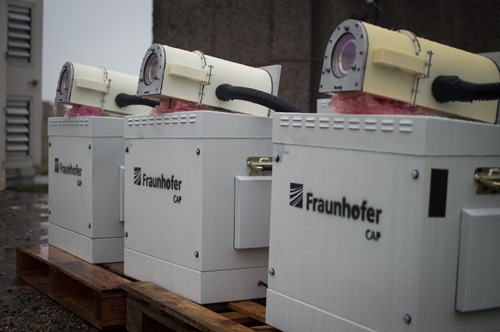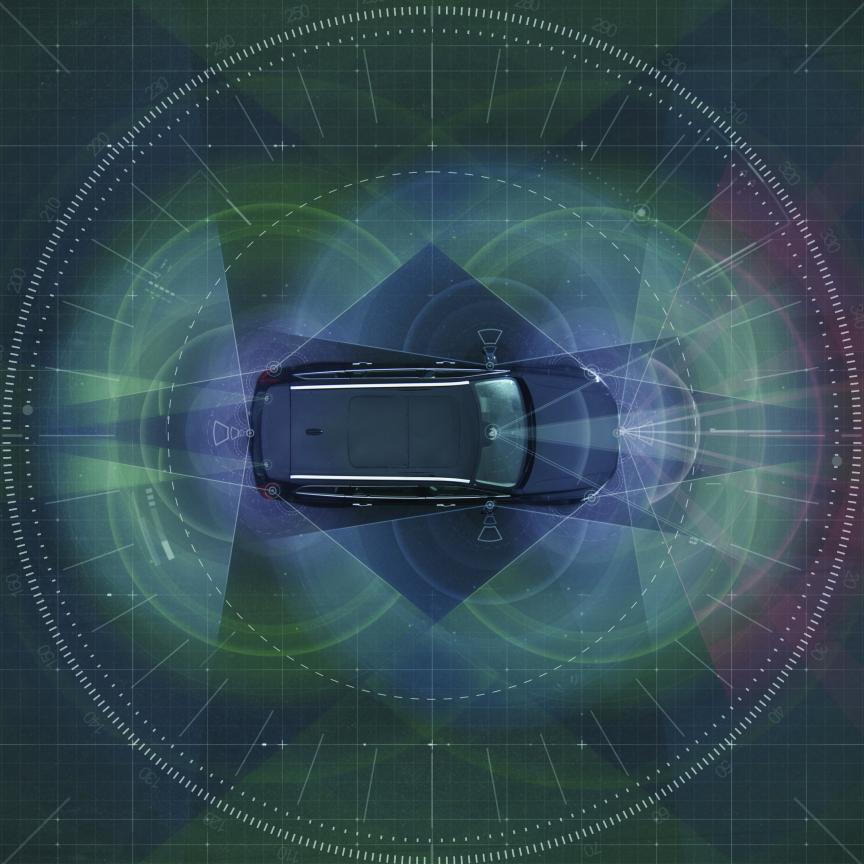Simon Andrews, executive director of Fraunhofer UK Research, believes the excitement surrounding automotive lidar will ultimately bring benefits to many other sectors
The popular press is enjoying a rich vein of stories in the travails of autonomous vehicles. The hope, the fear and the hype have all had major coverage in recent months. For those of us who look to future photonics success, there is much to consider beyond the headlines. The myriad technologies being harvested to enable these visionary vehicles each have major challenges but also worthwhile markets. I believe that the developments in lidar for automotive use will have many bumps in the road, like many rapidly developing technologies, but ultimately we will see a range of new markets emerge well beyond the hysteria of the mass market self-driving family jalopy.
Firstly, to get beyond the hype we need to take steps with the correct language in order to meet expectations. The price of a meal in a restaurant these days seems to be proportional to the number of adjectives detailing its provenance on the menu. For every seasonal, organic, local, artisan, hand-reared, epithet an additional 10 per cent is added to the bottom line even if it does little to impact on our experience. Our cars may temporarily head in the same direction, with labels such as ‘smart’, ‘assistive’, ‘hybrid’, ‘electric’, ‘autonomous’, ‘fully recyclable’, ‘shareable’, ‘guided’, and ‘self-parking’ whetting the appetite. Early adopters will pay the premium for each step on the ladder to full autonomy. But the progress will falter if the reality fails to meet the expectations of the driver/passenger.
A widely-shared video clip on the BBC website (see below) showing a Tesla vehicle failing to brake in time when the car in front suddenly changes lane to avoid a stationary vehicle ahead, highlighted the sober truth that ‘autopilot’ requires an alert human at all times, and that ‘assistive’ would be a more helpful, realistic description. Early scare stories such as these may cast a shadow on progress and put pressure on the technology to be more robust, reliable and demonstrably better than a human driver.
Early investments will help ensure the technology is matured. There are, of course, many technologies that need to come together to make the complete journey to driverless, including radar and camera systems, but recent acquisitions are centring on lidar. General Motors2, Ford3, BMW4, ZF5 and Toyota6, for example, have all made major investments and acquisitons. This corporate activity, however, does not indicate that the technology is complete.
The UK’s Knowledge Transfer Network (KTN) recently held an event in London bringing together a cross section of companies from the transport and photonics sectors to explore lidar for transport. Representatives from Jaguar Land Rover, the Environment Agency and Network Rail outlined some of the application challenges, with Photonic Vision, Red Sensors and the Fraunhofer Centre for Applied Photonics described current UK commercial and research activity. This was a frank exchange with all highlighting some great potential and everyone being just as honest with the pitfalls and obstacles still to be fully addressed. The debate on whether 1,550nm gives any significant advantage over 850nm, the expectations of driving speed through fog and rain, the ability of snow to cover a car and road markings alike, and the exquisite challenge of seeing a motorbike at 200 metres or optically differentiating a large shredded tyre from black tarmac. Broadly, it is acknowledged that cost and performance of current lidar systems present a major barrier to wider adoption, and that this then presents an opportunity to provide improved sources, sensors, optics and system integration. The naysayers can easily point to the cost of some lidar systems being more than prestige automobiles.
However, automotive is not the only consideration. Network Rail discussed their widespread use of drone mounted equipment to scan embankments hyperspectrally to understand the risks of land slips. On-train lidar could help preventative maintenance of tracks, a huge potential saving well worth the cost of a substantial optical system. The UK Environment Agency is completing a lidar scan of England to a resolution of one metre. These various platforms have different demands and constraints, but each offers avenues for the incremental improvements in sub-systems to make useful gains in a range of sectors with established needs and acceptance of lidar systems. There are more challenges around the corner; a train travelling at a mere 40 kilometres per hour takes one kilometre to stop. Ideally it would have hazard detection capability at least that far, often around a bend.
The use of different vehicles will provide fertile ground for imaginative optical engineers, with drones of all sizes, aerial and marine, satellites, robots/vehicles in factories, warehouses and shopping centres, each providing commercial opportunities for tailored obstacle avoidance and situational awareness systems. Every submarine, UAV, train, tram, satellite and plane needs to know where it is, what is around it and what is in its way.
Aside from these platforms needed to identify hard targets, planes and airports can increase efficiency by detecting aerosols and measuring the wind. The scope for this need for a range of technical solutions is something we have learned from working in wind energy. There is the need for optimisation, site surveying, for positioning turbines, for verification of performance, for gust detection and progressing systems which can operate from near to several kilometres out from the nacelle. With more than 300,000 turbines worldwide, the opportunity for gathering high quality valuable data is well worth pursuing, adding profit to every day of the decades of life expected from these huge capital investments.
At Fraunhofer CAP in Glasgow, we have developed several distinctive lidar systems for wind energy applications. With each application, different priorities on everyone’s favourite classic engineering parameters, size, weight, cost, performance, demand bespoke solutions. From floating lidar, to meticulously accurate short and long-range systems, dedicated performance-verificaiton systems and, of course, lowest cost, each specification has driven the choice of wavelength, source, scanning (or not) detection and stabilisation.

The use and progession of lidar in other settings will allow the uptake of niche systems, and, as each mass market breakthrough component appears on the scene, this will then provide additional benefits in other sectors.
Lidar will be an area of great commercial as well as technical tumult. Other motivations and possibilities emerged in conversations at the KTN event. Will the insurance market transition from the driver to the manufacturers, from billions of policies to a handful? From casual conversations it appears that already the insurance differences on collision prevention are driving consumer choices on vehicles. Data fusion and the difficulty of integrating inputs from many different sensing and imaging systems giving robust real-time decision making is also a significant challenge to be tackled. The need for standards, testing and interoperability are not yet well addressed either. The vast amount of data generated has its own issues, such as transmitting and storing. The conclusion of the event was that there is much to be done, but it is well worth pursuing.
In the round, lidar is headed for a rollercoaster of hype, glory, disappointment and redemption in the public eye, and then I predict quiet but enormous success in many realms beyond the high street and highway.


